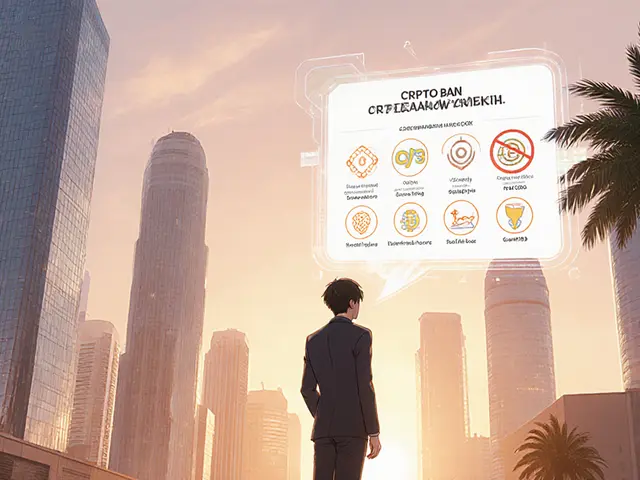Crypto Collateral Explained: How It Powers DeFi Loans and What You Need to Know
When you use crypto collateral, digital assets like Bitcoin or Ethereum pledged as security to borrow cash or stablecoins. Also known as collateralized loans, it’s how millions unlock liquidity without selling their crypto. Instead of cashing out during a market dip, you lock your coins in a smart contract and get a loan—usually 50% to 80% of their value. This isn’t magic. It’s basic finance, but on blockchain.
Most DeFi loans, lending protocols built on Ethereum, Solana, or other blockchains that operate without banks rely on this model. Platforms like Aave, Compound, and MakerDAO let you deposit ETH, USDC, or even lesser-known tokens as collateral. But here’s the catch: if your crypto’s price drops too fast, the system automatically sells part of your collateral to cover the loan. That’s called a liquidation—and it’s why some people lose their holdings overnight. It’s not about being risky. It’s about understanding the math behind the loan-to-value ratio.
Not all collateral is equal. Bitcoin and Ethereum are stable enough to be accepted by nearly every platform. But tokens like LUXO, AAZ, or BRISE? They’re too volatile, too new, or too low in liquidity. That’s why you won’t see them listed as acceptable collateral on major DeFi apps. Even if a token has a flashy name or a big marketing campaign, if it doesn’t trade on enough exchanges or lacks deep liquidity pools, it’s useless as collateral. Real-world examples? Look at Bitgert’s BRISE. It promises zero gas fees, but its price swings too wildly for lenders to trust it as security. Same goes for PureVidz (VIDZ)—a dead token that can’t even be sold, let alone used to borrow money.
And it’s not just about the token. The blockchain matters too. If you’re using a chain with slow confirmations or high fees, your collateral might not be able to react fast enough when prices drop. That’s why most collateralized loans happen on Ethereum, Arbitrum, or Optimism. These networks move fast enough to handle margin calls before things spiral.
Some people think crypto collateral is just for traders. It’s not. Farmers use it to fund operations without selling their tokens. Investors use it to buy more crypto without triggering tax events. Even in places like Iran or Saudi Arabia, where banks are restricted, crypto collateral lets people access global credit using their digital assets. But it only works if you know the rules: never over-leverage, always monitor your health ratio, and avoid obscure tokens as collateral.
You’ll find posts here that dive into real cases—like how courts treat crypto as property when loans go bad, or why exchanges like WardenSwap and BB EXCHANGE are too risky to trust with your collateral. Some articles show you how to claim airdrops tied to lending platforms, while others warn you about fake tokens that pretend to be collateral assets. This isn’t theory. It’s what’s happening right now in DeFi, on-chain, in real time. Whether you’re trying to borrow against your Bitcoin or just want to avoid getting liquidated, the guides below give you the facts—no fluff, no hype, just what works and what doesn’t.
3
What Is Collateralization in DeFi? A Clear Guide to How It Works and Why It Matters
Collateralization in DeFi lets you borrow crypto by locking up other assets as security. Unlike banks, DeFi requires overcollateralization-often 150% or more-to protect against volatile prices. Learn how it works, why liquidations happen, and who uses it.
Latest Posts
Popular Posts
-
 What is Bitgert (BRISE) crypto coin? Full breakdown of the blockchain, tokenomics, and real-world performance
What is Bitgert (BRISE) crypto coin? Full breakdown of the blockchain, tokenomics, and real-world performance
-
 What Is Collateralization in DeFi? A Clear Guide to How It Works and Why It Matters
What Is Collateralization in DeFi? A Clear Guide to How It Works and Why It Matters
-
 What is LUXO (LUXO) crypto coin? The truth about the luxury authentication token
What is LUXO (LUXO) crypto coin? The truth about the luxury authentication token
-
 What is Privix New (PRIVIX) Crypto Coin? Facts, Price, and Risks in 2025
What is Privix New (PRIVIX) Crypto Coin? Facts, Price, and Risks in 2025
-
 Xena Exchange Crypto Exchange Review: Professional Tools vs. Regulatory Risks
Xena Exchange Crypto Exchange Review: Professional Tools vs. Regulatory Risks
Tags
- crypto exchange
- cryptocurrency
- crypto exchange review
- meme cryptocurrency
- blockchain
- cryptocurrency compliance
- Binance Smart Chain
- CoinMarketCap airdrop
- underground crypto Nepal
- crypto airdrop guide
- crypto staking
- Bitcoin mining Iran
- airdrop
- Ethereum staking
- GENIUS Act
- liquid staking
- cryptocurrency exchange security
- crypto
- crypto airdrop
- crypto regulations


